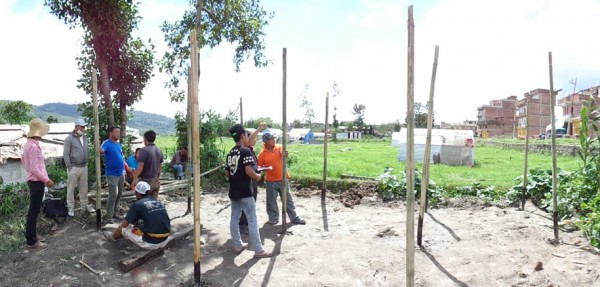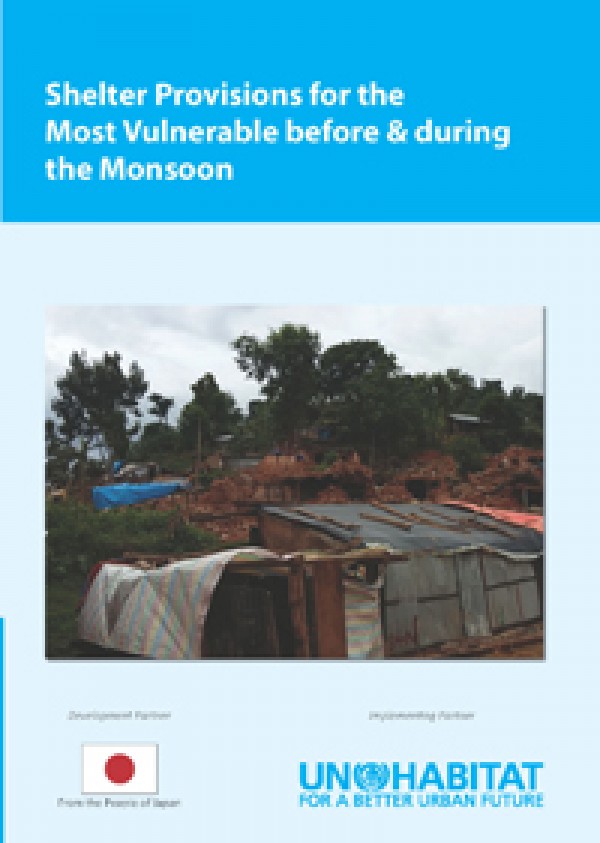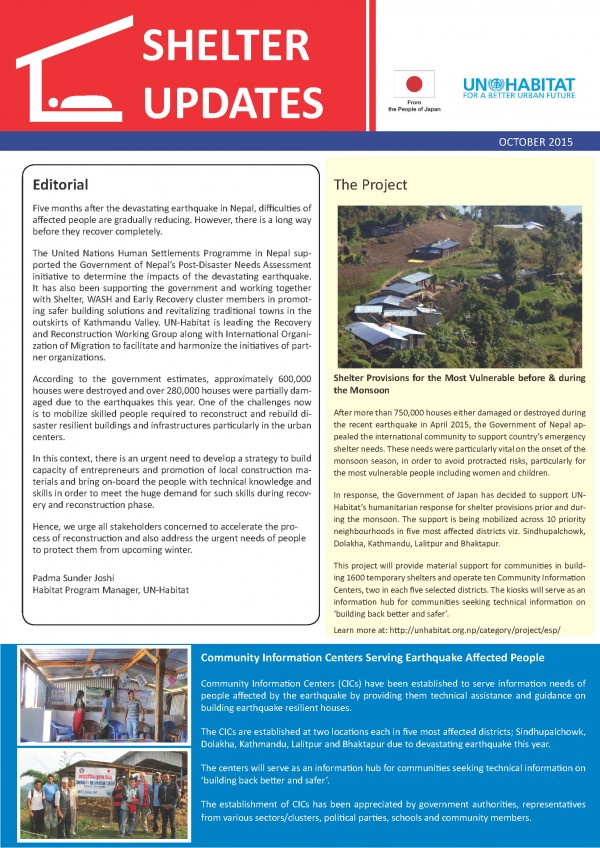
Emergency Shelter Project
Background
More than three quarter of a million houses collapsed or are damaged during the recent earthquake in April 2015. To respond to this enormous task, the Government of Nepal appealed the international community to support country’s emergency shelter needs. These needs were particularly vital on the onset of the monsoon season, in order to avoid protracted risks, particularly for the most vulnerable people including women and children.
Therefore, in response to this appeal, The United Nations Human Settlements Program (UN-Habitat) in Nepal is implementing a project funded by the Government of Japan that will provide shelter provision for the most vulnerable populations across 10 priority neighbourhoods in five most affected districts.
Target Areas: Sindhupalchowk, Dolakha, Kathmandu, Lalitpur and Bhaktapur districts
Beneficiaries
- 2,200 most vulnerable households – of which 1600 households targeted for temporary shelter provision and an additional 600 households provided with shelter solutions (repair, rental subsidy, host family support)
- At least 10,000 households provided with technical assistance, guidance and supervision on community-led “building back better” initiatives. 1200 very vulnerable households facilitated to participate in emergent community-led shelter recovery initiatives
Objective
The overall goal of the intervention is to provide life-saving support during the 2015 monsoon to the most vulnerable households in five districts and to enhance their capacity to engage in community-led recovery.
Planned Activities
Districts
- Establish rapid action plans together with local authorities and coordination entities to identify and prioritize highly vulnerable households with urgent need for shelter assistance
- Provide continuous feedback to the district authorities on the vulnerability issues addressed and newly emerging ones
- Establish 10 community information centers at strategic locations in 5 districts.
Neighborhoods
- Mobilize community assistance in selected neighborhoods with priority needs
- Strengthen advocacy after the monsoon to engage the most vulnerable households in the emergent community-led recovery initiatives
Households
- Provide rapid shelter support to selected households from a range of quick action solutions (cash, reuse of materials, community labour)
- Set up a stand-by capacity during the monsoon, to identify recurrent and new needs in the selected neighborhoods
Expected Outputs
- Five most affected districts possess updated vulnerability maps (shelter situation and vulnerable household clusters), for targeting immediate assistance and informing emergent recovery initiatives
- Ten Community Information Centres, two in each selected districts, established and serve neighborhoods with major impacts on housing and having significant number of vulnerable population
- 10,000 households provided with Information, Education and Communication materials on ‘building back safer’ and the community-driven approach
- 2,200 very vulnerable households provided with shelter support. Of which 1600 households targeted for temporary shelter provision prior to the monsoon and an additional 600 households provided shelter solutions (repair, rental subsidy, host family)
- 1,200 very vulnerable households facilitated to participate in emergent community-led shelter recovery initiatives
UN-Habitat Nepal Emergency Support Project Structure




